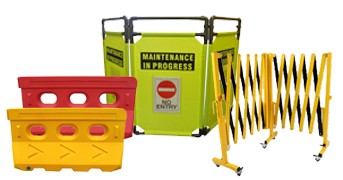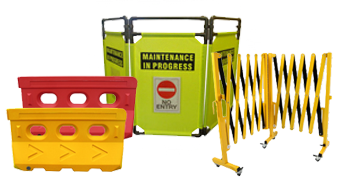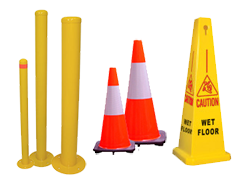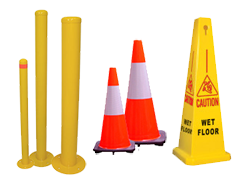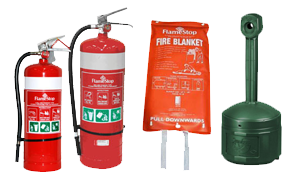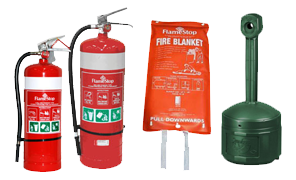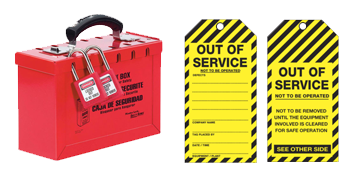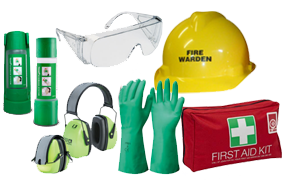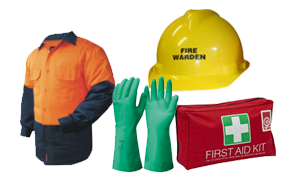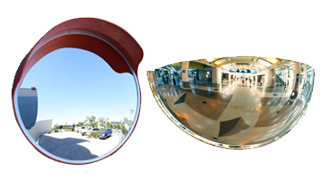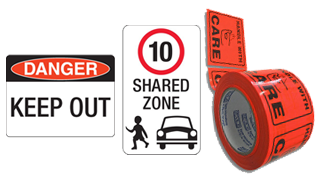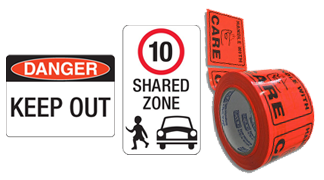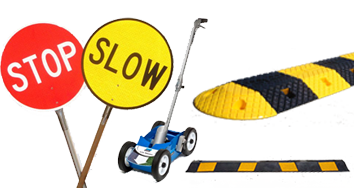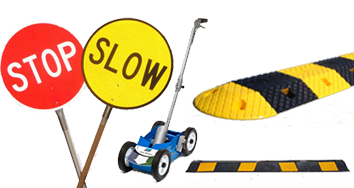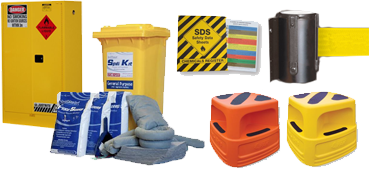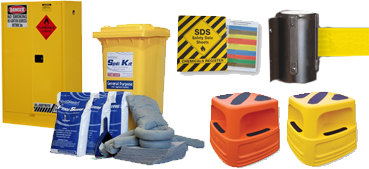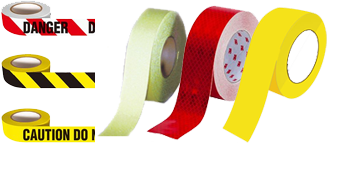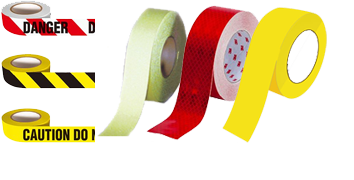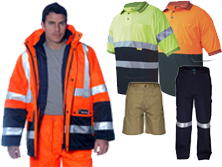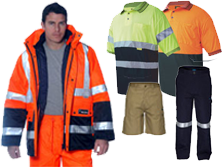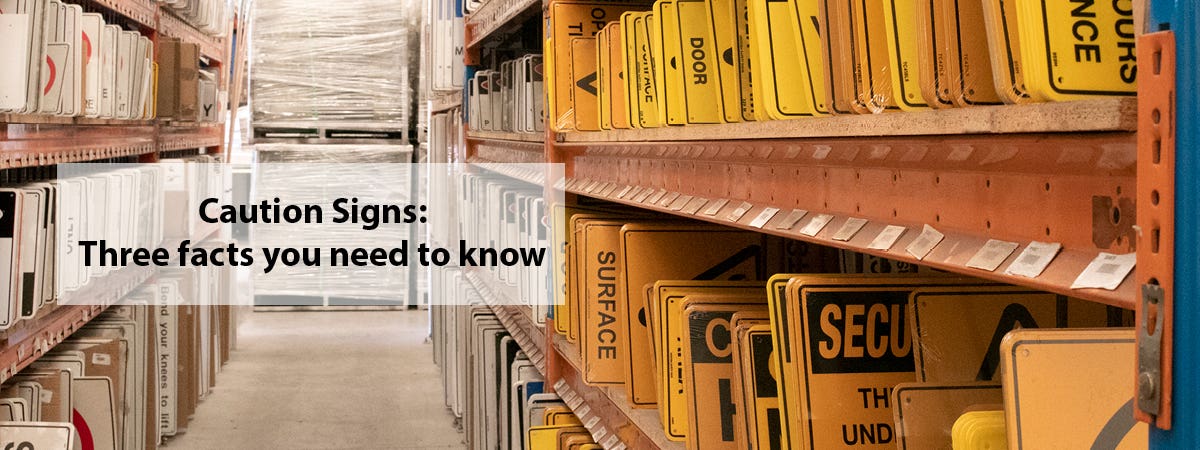Caution signs are used in facilities, worksites and even roadsides to indicate a hazard or hazardous situation that is not likely to be life-threatening. Caution signs are recognisable by bright yellow colouring, bold text and will often include a symbol or pictogram.
1. Caution Vs Warning Signs
This is by far the most common question relating to Caution Signs that Bronson Safety staff receive. To answer the question in short, there is very little difference indicated by Australian Safety Signage Laws and Guidelines between Caution and Warning Signs.
Both Caution and Warning Signs are used to draw attention to particular hazards and, in some cases, will caution for or against particular behaviour. It is accepted in Australia that Caution and Warning signs can be used, for the most part, interchangeably.
In terms of Sign design, similar to Caution signs, Warning Signs are yellow and feature black and bold writing. As with many Caution Signs, Warning Signs will feature the word ‘Warning’ in Bold against a black background, but will additionally feature a triangle with an exclamation mark on the left-hand side.
2. Using a Caution Sign in a Dangerous Environment
Australian Workplace Health and Safety Laws and Australian Standard As1319-1994 state that Caution Signs cannot be used to warn of a hazard that is likely to be life-threatening. As such, when considering the placement of a Caution Sign in a dangerous environment, it is first imperative to consider the extent of the danger. Caution signs may be used where the risk of personal injury is relatively low, and the expected personal injury due to the hazard is not likely to be life-threatening. Danger Signs should be used where a hazard is so severe that it may present a high risk of personal injury and is likely to be life-threatening.
For example, the sign legend ‘Watch Your Step’ is available as both a Caution Sign and a Danger Sign on the Bronson Safety Website. In the instance of a Caution sign, this legend may be used to indicate a small 5cm step down that represents a tripping hazard if unnoticed. This trip hazard must be measured as a low trip risk and a low injury risk. However, should this same legend be used as a Danger Sign, it may be used to represent a trip or fall hazard likely to cause serious injury or death if unnoticed. It is very important that these Signs are used correctly so as to convey the adequate level of danger from any potential hazard.
3. Placement (door or object?)
Australian Standard AS1319-1994 ‘Safety Signs for the occupational Environment’ states that caution signs should be located where the message is legible and visible to all concerned, and where it is likely to attract attention.
To be effective, caution safety signs must be located in close proximity to the related hazardous area or object. However, there is no “one size fits all” approach to positioning a caution sign in a workplace, as it is situationally dependent.
As a general rule, a caution sign will most often be positioned in one of the following three places:
A. At the threshold to a hazardous area or an area containing a particular hazard
A good example of a caution sign that will be placed at the threshold of a hazardous area, is a ‘Biosecurity’ Caution Sign, such as the below ‘Biosecurity Holding Area’ sign. This sign is used to indicate an entire area where biosecurity controlled goods are stored, handled or inspected, to indicate a potential risk to nearby people.
As Biosecurity signs are referencing an entire area and are indicating a risk upon entry to that area, they must be positioned at the area’s threshold. Place these signs in a high-visibility position on all gates or doors that lead into the area, to offer any potentially unauthorized entrants ample warning. For example, placement at eye height immediately beside the doorway will be more effective than placement on a sidewall in the hallway leading to the doorway entrance.
B. On the hazardous object
Caution signs displaying ‘Pinch Point’ and ‘Hot Water’ are good examples of instances where a caution sign would be placed on a hazardous object. For signs such as these that indicate an object-specific hazard, they must be positioned in a stationary but visible position on or in close proximity to the hazard.
In the example of a ‘Hot Water’ caution sign, placing it on a hot water boiler, directly above the tap is more effective than placing the same sign on a far wall, or at the entrance to a kitchen for example. In the instance of a sign cautioning a ‘Pinch Point’, it may be placed beside the “on/off’ button of a machine with a pinch point, to remind the operator to ensure all hands and limbs are clear before turning the machine is powered on.
When placing a caution sign on an object, it is important to consider the likelihood of visual obstructions to the sign when deciding placement. For example, do not place these signs on moveable objects, doors or in areas likely to be covered for any reason.
C. In a stationary position beside or immediately preceding a hazard
In the instance of a hazard within a facility or area, such as a ‘Tripping Hazard’, ‘Slippery Surface’ or ‘Steep Stairs’, Caution Signs should be installed either beside or directly preceding the hazard. These signs must be located as close as possible to the hazard, to ensure that a viewer is able to directly associate the warning with the hazard. For example, if a cord or cable on the floor is likely to present a tripping hazard, the relevant sign may be placed at eye height beside the cord or cable.
Additionally, when considering the placement of Caution Signs relating to specific hazards, it is important that contrast should exist between the colour of the sign and the surroundings of its placement.

